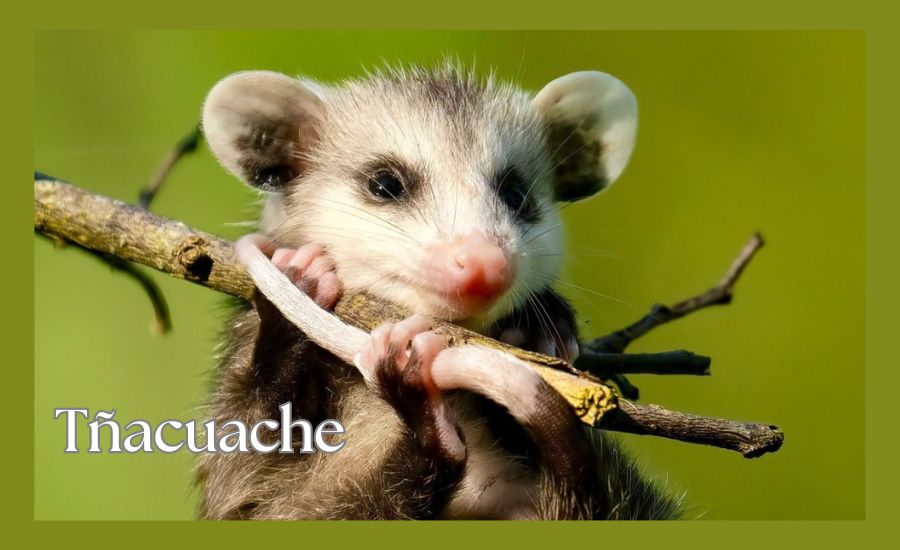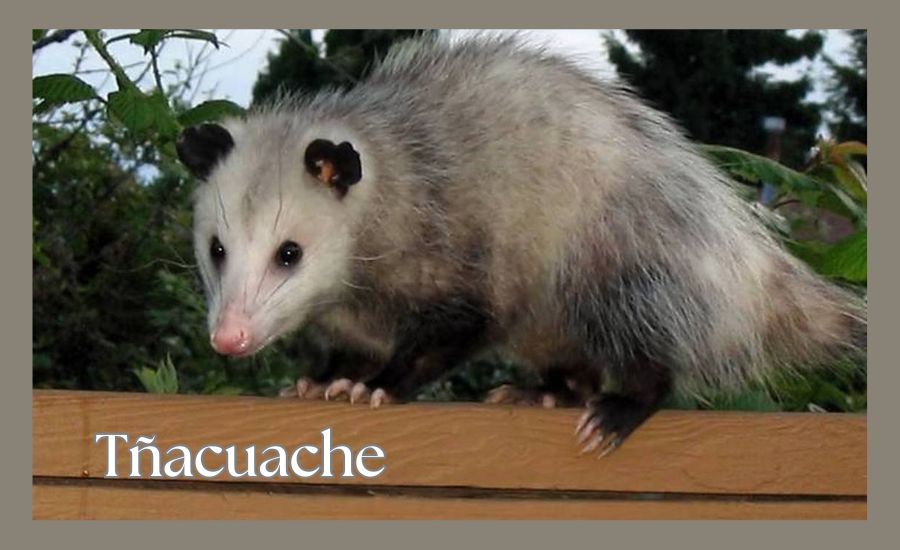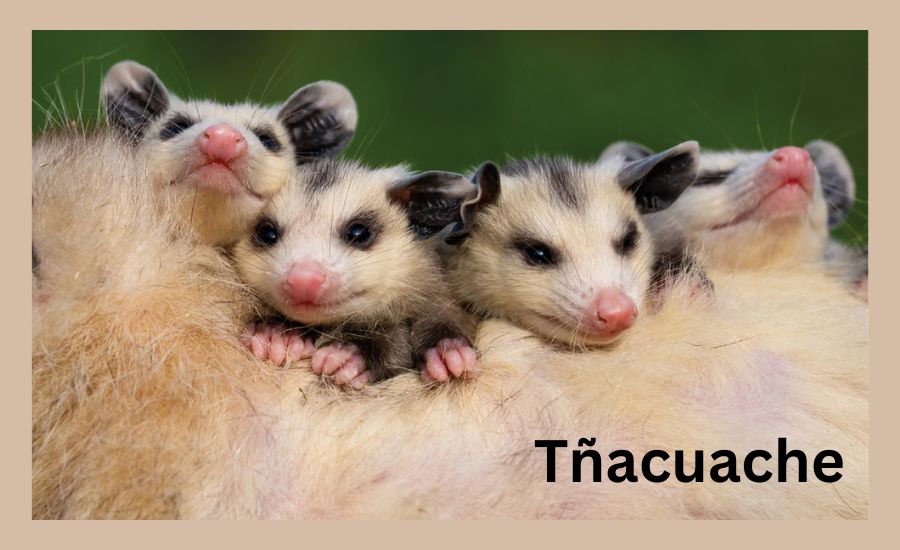The tñacuache, also known as the opossum, is a remarkable creature often overlooked in the world of wildlife. This nocturnal animal, with its unique appearance and behaviors, plays a crucial role in maintaining the health of our environment. From its role in pest control to its efforts in cleaning up organic waste, the tñacuache is an unsung hero in nature’s intricate web.
Despite its sometimes eerie look and habits, the tñacuache contributes significantly to ecosystem balance. By consuming a wide range of pests and helping with seed dispersal, it supports biodiversity and keeps our surroundings healthy. Understanding the tñacuache and its importance can change the way we view this fascinating marsupial.
What Is A Tñacuache? Exploring The Opossum’s Unique Traits
The tñacuache, also known as the opossum, is a special animal found in the Americas. This small marsupial is known for its distinct features like a prehensile tail, which helps it climb and balance. Its pointed snout and sharp teeth make it easy to identify, even though it might look a bit unusual.
One interesting trait of the tñacuache is its ability to play dead when threatened. This means the tñacuache will lie still, make a foul smell, and appear lifeless to scare off predators. This clever trick helps it survive in the wild.
Another unique feature is its adaptability. The tñacuache can live in many different places, from forests and swamps to cities and suburbs. This ability to adjust to various environments makes it a resilient and successful creature.
How The Tñacuache Helps Keep Our Ecosystem Balanced
The tñacuache is a vital part of our ecosystem. By eating insects, small rodents, and other pests, it helps control their populations. This means fewer pests in our environment, which can lead to fewer diseases and less need for chemicals to manage pests.
As scavengers, tñacuaches play a crucial role in cleaning up the environment. They consume dead animals and other organic waste, which helps prevent the spread of diseases and recycles nutrients back into the soil.
The tñacuache also contributes to seed dispersal. When it eats fruits and berries, the seeds pass through its system and are spread across different areas. This helps plants grow and thrive, supporting forest health and biodiversity.
The Tñacuache’s Role In Natural Pest Control

One of the most important roles of the tñacuache is its natural pest control. This marsupial eats a wide variety of insects and small animals that can be pests. By controlling these populations, tñacuaches help keep the balance in nature.
In urban areas, tñacuaches can be especially helpful. They eat pests that might invade homes and gardens, such as ticks and beetles. This means that having tñacuaches around can reduce the number of pests that bother people and pets.
Tñacuaches also help control the spread of diseases carried by pests. By reducing the number of ticks and other harmful insects, they lower the risk of diseases like Lyme disease, which can affect both humans and animals.
Why The Tñacuache Is A Valuable Scavenger And Cleaner
The tñacuache is known for its scavenging habits, which play a vital role in keeping the environment clean. It consumes dead animals and other waste, which helps to prevent the buildup of decaying matter in the ecosystem.
By eating carrion, the tñacuache helps recycle nutrients back into the soil. This process enriches the earth and supports plant growth, making it easier for new plants to grow and thrive.
In urban settings, tñacuaches often forage through trash bins, which can help reduce the amount of waste left in the environment. This natural cleaning process is beneficial for maintaining a healthier and cleaner environment.
How Tñacuaches Contribute To Seed Dispersal And Plant Growth
Tñacuaches play an important role in seed dispersal. When they eat fruits and berries, they consume seeds that later pass through their digestive system. This process helps spread seeds across different areas.
The seeds in the tñacuache’s droppings can germinate and grow into new plants. This helps increase plant diversity and supports the regeneration of forests and other natural habitats.
By aiding in plant growth, tñacuaches contribute to a healthier and more balanced ecosystem. Their role in dispersing seeds is essential for maintaining the natural environment and supporting biodiversity.
The Benefits Of Tñacuaches In Urban And Suburban Areas
In urban and suburban areas, tñacuaches can be very beneficial. They help control pests like insects and rodents, which can be common problems in these environments. This natural pest control reduces the need for chemical treatments.
Tñacuaches also help keep gardens and green spaces healthy. They eat garden pests like snails and slugs, which can damage plants. Their presence in these areas helps maintain a balanced ecosystem.
Additionally, tñacuaches help manage waste by scavenging through garbage. This can reduce the amount of trash left in the environment and contribute to a cleaner and healthier community.
Debunking Myths: What You Need To Know About Tñacuaches

There are many myths about tñacuaches that can lead to misunderstandings. One common myth is that tñacuaches are aggressive. In reality, tñacuaches are usually not aggressive and prefer to avoid confrontation.
Another myth is that tñacuaches carry rabies. However, tñacuaches have a lower body temperature that makes it hard for the rabies virus to survive. Rabies in tñacuaches is extremely rare.
Some people also think tñacuaches are dirty. Despite their scavenging habits, tñacuaches groom themselves regularly. They are clean animals that play an important role in maintaining the health of their environment.
The Truth About Tñacuaches And Rabies: Separating Fact From Fiction
Many people worry about rabies when they see a tñacuache, but this concern is largely unfounded. Tñacuaches have a low body temperature, which makes it difficult for the rabies virus to thrive.
Cases of rabies in tñacuaches are very rare. The virus is not commonly found in these animals, so the risk of rabies from a tñacuache is minimal compared to other wildlife.
Understanding the facts about tñacuaches and rabies can help reduce unnecessary fear and promote a more accurate view of these important animals. They are generally not a significant risk for rabies transmission.
Read More: Soymamicoco\
How Tñacuaches Can Help You In Your Garden
Tñacuaches can be very helpful for gardeners. They eat pests like snails and slugs that can damage plants. By controlling these garden pests, tñacuaches help keep your garden healthy and thriving.
Their scavenging also helps by reducing the amount of waste and pests in your garden. This natural cleaning process can make your gardening experience more pleasant and less reliant on chemical solutions.
Having tñacuaches around can create a more balanced and eco-friendly garden. Their presence supports natural pest control and contributes to a healthier environment for your plants.
Understanding The Tñacuache’s Adaptability And Resilience
The tñacuache is known for its adaptability. It can live in a wide range of environments, from forests to cities. This ability to adjust to different habitats is a key factor in its survival.
Tñacuaches are also resilient creatures. They have developed unique strategies to cope with threats, such as playing dead to avoid predators. This resilience allows them to thrive in diverse conditions.
Their adaptability and resilience make tñacuaches a fascinating subject of study. These traits help them navigate challenges and maintain their role in the ecosystem.
The Tñacuache’s Role In Supporting Predator-Prey Relationships

In the food chain, tñacuaches play an important role as both predators and prey. They help control the populations of smaller animals and insects, which maintains balance in the ecosystem.
Tñacuaches also serve as food for larger predators like owls and coyotes. This predator-prey relationship is essential for the health of various species in the food chain.
Understanding the tñacuache’s role in these relationships highlights its importance in maintaining ecosystem balance. It helps ensure that natural processes continue to function smoothly.
How Tñacuaches Help Maintain Biodiversity In Different Habitats
Tñacuaches contribute to biodiversity by supporting various plant and animal species. Their role in seed dispersal helps promote plant diversity and forest regeneration.
They also support biodiversity by controlling pest populations. By eating insects and small animals, tñacuaches help prevent overpopulation and maintain a balanced ecosystem.
Their presence in different habitats, from forests to urban areas, shows how adaptable and beneficial they are. Tñacuaches play a key role in supporting a wide range of species and maintaining environmental health.
Tips For Coexisting With Tñacuaches: How To Avoid Conflicts
To peacefully coexist with tñacuaches, it’s important to make your home less attractive to them. Secure your garbage cans and remove food sources that might attract these animals.
Avoid using poisons or traps, as these can harm other wildlife and disrupt the ecosystem. Instead, focus on preventative measures to minimize conflicts with tñacuaches.
Educating yourself and others about the benefits of tñacuaches can help foster a positive attitude towards them. Understanding their role in the environment can lead to more harmonious coexistence.
Creating A Wildlife-Friendly Environment For Tñacuaches
Creating a wildlife-friendly environment can benefit both tñacuaches and other animals. Plant native vegetation and provide water sources to support local wildlife.
Avoid using pesticides in your garden, as these can harm tñacuaches and other beneficial creatures. Instead, use natural methods to manage pests and maintain a healthy ecosystem.
By integrating wildlife-friendly practices into your outdoor spaces, you can help create a welcoming environment for tñacuaches and support biodiversity in your area.
What We Can Learn From The Tñacuache: Lessons In Survival And Adaptation
The tñacuache teaches valuable lessons about survival and adaptation. Its ability to thrive in diverse environments shows how flexibility can help overcome challenges.
The tñacuache’s resilience, such as its defensive tactics and survival skills, highlights the power of nature and the importance of preserving different species.
Learning from the tñacuache’s adaptability and resilience can inspire us to be more mindful of the natural world and the creatures that help maintain its balance.
Conclusion
In summary, the tñacuache, or opossum, is a fascinating creature with many unique traits. From its special ability to play dead to its role as a natural pest controller, the tñacuache is truly a remarkable part of our ecosystem. Its adaptability and resilience make it an important animal in both natural and urban environments.
By understanding and appreciating the tñacuache, we can learn more about the delicate balance of nature and how each animal contributes to it. So next time you spot a tñacuache, remember the important role it plays in keeping our environment healthy and balanced!
Here is the informative blog Kindly Read
FAQs
Q: What does a tñacuache look like?
A: A tñacuache, or opossum, has a long, pointed snout, a prehensile tail, and a mix of gray and white fur. It also has sharp teeth and large, expressive eyes.
Q: Are tñacuaches dangerous to humans?
A: No, tñacuaches are not dangerous to humans. They are generally shy and prefer to avoid contact with people.
Q: What do tñacuaches eat?
A: Tñacuaches eat a variety of foods, including insects, small animals, fruits, and garbage. They are omnivores and will eat whatever is available.
Q: How do tñacuaches help the environment?
A: Tñacuaches help by controlling pest populations, cleaning up dead animals, and dispersing seeds. They play an important role in keeping the ecosystem balanced.
Q: Can tñacuaches carry diseases?
A: Tñacuaches can carry some diseases, but they are less likely to carry rabies compared to other animals. Proper precautions should still be taken.
Q: How do tñacuaches defend themselves?
A: Tñacuaches defend themselves by playing dead, making a foul smell, or hissing. They prefer to avoid conflict rather than fighting.
Q: Where can you find tñacuaches?
A: Tñacuaches are found in a variety of habitats, including forests, swamps, and urban areas across the Americas. They are adaptable and can live in many different environments.